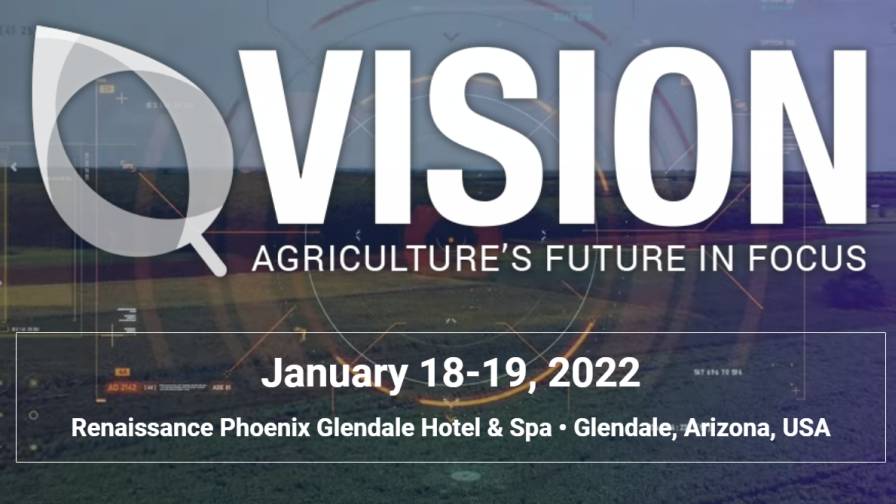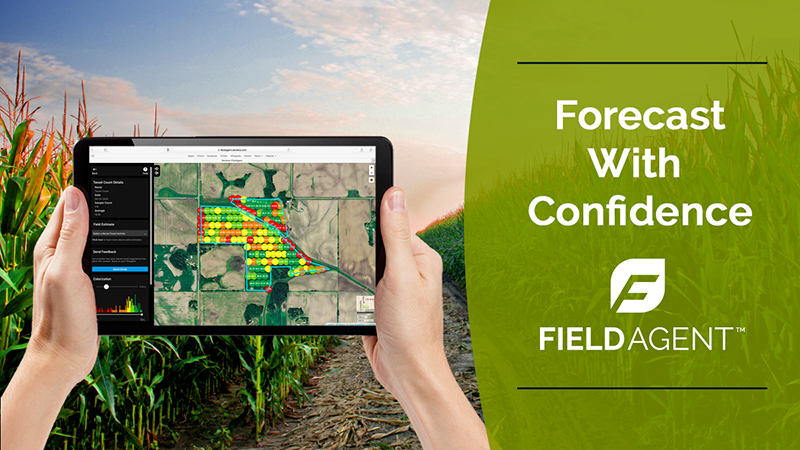The Future of Farming Automation: What Are the Short- and Long-Term Opportunities?
 Editor’s note: The VISION Conference 2022 will feature expanded exploration of where innovation is rapidly driving change, including trends in high-value specialty crops, sustainability and carbon sequestration programs, and high-tech controlled environment production systems. One hot-button topic on the agenda is automation and robotics. Below is an inside look at how agricultural robotics continues to be accepted for some tasks, paving the way for fully autonomous vehicles in the future.
Editor’s note: The VISION Conference 2022 will feature expanded exploration of where innovation is rapidly driving change, including trends in high-value specialty crops, sustainability and carbon sequestration programs, and high-tech controlled environment production systems. One hot-button topic on the agenda is automation and robotics. Below is an inside look at how agricultural robotics continues to be accepted for some tasks, paving the way for fully autonomous vehicles in the future.
Sure, part of a farmer’s job can already be automated, but can a robot perform all of his or her tasks in the field?
This was the debate during a panel session titled, “Farming with no tractor driver – Is it possible?” during the International Forum of Agricultural Robotics (FIRA) virtual event last year.
The group, which included a farm employee who is using and testing robotics on his farm, as well as robotic equipment manufacturers and suppliers, discussed the short-term possibilities and challenges, as well as long-term opportunities and safety hurdles.
MORE BY NICOLE WISNIEWSKI
How the Pandemic Has Impacted Investor Relationships in AgTech
Short- and Long-term Opportunities
Farms in the U.S., Australia, and Europe have already been using robots in the field, explains Aymeric Barthes, CEO of Naio Technologies.
Where robots have been proving most useful is in specific crops like vegetables and vineyards.
Antoine Chatelain with Chatelain Nursery has been using self-guided, GPS-driven tractors in the field. For his farm, this greatly reduces the job of very repetitive tasks like weeding.
However, when it comes to more complicated tasks like seeding, automation gets a bit trickier.
“From the moment you put seed into the ground, thousands of things can stop a seed’s ability to reach its full genetic potential,” explains Greg Meyers, CIO/CD, Syngenta. “And all of those things require hundreds, if not thousands, of decisions that humans have to make. So, in many cases, farming is still an art and relies on intuition, experience, and judgement. It is still very common for farmers to farm the way their parents and grandparents have done because they know that land.”
But because the systems operating in nature follow the laws of science, there is an opportunity to collect data on the different nuances of why things occur and mathematize that over time to aid the progression of artificial intelligence, Meyers says.
He used the analogy of automotive technology to make his point. The self-driving car has to go through many steps to achieve success. First, there’s lane change assist and then many steps in between before it reaches full autonomy. Robotic farming equipment will have to go through the same process. And the high amount of variability on a farm can make this a little more challenging.
“Farming today is still based on a lot of averages,” Meyers explains. “Pesticides are largely broadcasted and applied across a field. In the long-term, technology will be able to perceive small differences and enable you to do something different plant by plant. Humans don’t have the cognitive ability to do that, but it’s something that computers and data science and machinery can work together to do and unlock a whole new opportunity to radically change how agriculture is done.”
Another concept being researched, he said, is regenerative agriculture, which is the idea that you can create maximum biodiversity in a field. “Think about it: Farming is long rows of the same crop because that’s efficient for human beings,” Meyers explains. “But the moment when you don’t need humans anymore to sit in a tractor for eight to 12 hours a day is the moment you have the ability to change the way agriculture is done. You can not only help farmers be more productive because they don’t have to rely on hard-to-find labor, but you can farm more sustainability. Healthy weeds and crops can work together with the soil to sequester more carbon in the atmosphere.”
Automation’s Big Challenges
It’s not a secret that automating farming is initially a costly endeavor. “When you purchase the equipment, it’s pretty expensive,” Chatelain says, “but the machines cost nothing to run because electricity is quite cheap, and you don’t need labor to supervise them.”
But that’s only on the repetitive tasks where artificial intelligence works best. For some parts of farming, human expertise is still necessary for decision making.
So, if a human is still needed in these cases, the question arises: “How can we justify the cost of the machine?”
Barthes says the goal to overcome this challenge would be to put a supervisor in charge of multiple machines vs. just one machine.
A robot can work well in testing, but a farmer needs to be able to walk away and be confident that the machine won’t run over valuable crops or perform incorrect tasks. “It’s a matter of reliability and trust,” Chatelain says.
Also, farms are not clean, predictable environments. There is mud and weather that can make cameras on machines unable to do their jobs. For very repeatable tasks like seeding and harvesting, the technology is already very mature, Meyers says, but Mother Nature will always present some challenges.
Another hurdle on the way to the advancement of AI on the farm is battery power, the charger, and charge availability in the field from the ground or a solar power station, points out Gordon Clements, general manager solutions with VARTA Ag.
The goal would be smaller, more optimized batteries that are packaged safely paired with an optimized charger. “Battery packaging, especially in the application of agriculture robotics, is subjected to shock, vibration, pretty harsh weather environments – direct sun, rain – all these things have to be considered in terms of how the battery is packaged and housed. If all these things are done right, the safety issue can be managed in such a way that represents a very small risk to the end user.”
Clements says the future goal is for a machine to learn power consumption and charging regime data and then optimize that for each individual application so the farmer can determine the best combination of battery and modules needed.









